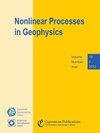利用模糊聚类概念对声阻抗进行多维、多约束地震反演
IF 1.7
4区 地球科学
Q3 GEOSCIENCES, MULTIDISCIPLINARY
引用次数: 0
摘要
摘要在将地震数据转化为有关地下岩石和流体性质的重要信息的过程中,地震反演是一项重要工具。这促使研究人员开发了多种地震反演方法和软件。由于地震数据具有频带限制性,地震反演是一种困难问题,其结果也不是唯一的,因此每种方法都试图使用初始信息,并假设结果的预期条件。满足一般的低频趋势、具有平滑模型或阶跃结果是这些方法添加到反演过程中作为约束条件的一些假设。井录、地质研究和其他地球物理方法的模型可以为地震反演结果增添重要的洞察力。我们引入了一个目标函数,将先验信息的聚类特性作为地震反演过程的约束条件以及其他常见约束条件。我们解释了目标函数的最优解。我们将 Gustafson-Kessel 模糊 C-means 作为可能的聚类方法之一用于聚类项。数值合成和实际数据实例显示了所提方法在地震数据反演中的效率。除声阻抗模型外,建议的地震反演方法还能创建可靠的输入地震数据的解卷积和去噪版本。此外,反演过程中输出的成员剖面在地震解释中显示出巨大潜力。建议进一步研究如何选择最佳模糊度、更新小波,以及成员剖面在追踪地层、区分序列和层位、识别层位的可能内容和其他可能应用方面的潜力。本文章由计算机程序翻译,如有差异,请以英文原文为准。
Multi-dimensional, Multi-Constraint Seismic Inversion of Acoustic Impedance Using Fuzzy Clustering Concepts
Abstract. In the process of transforming seismic data into vital information about subsurface rock and fluid properties, seismic inversion is a crucial tool. This motivates researchers to develop several seismic inversion methods and software. Since the seismic data are band-limited, seismic inversion is ill-posed, and the results are not unique, each method tries to use initial information and assumes expected conditions for the results. Satisfying a general low-frequency trend and having a smooth model or step-wise results are some of the assumptions that these methods add as constraints to the inversion process. Well-logs, geological studies, and models from other geophysical methods can add important insight into the seismic inversion results. We introduce an objective function that applies the clustering properties of the prior information as a constraint to the seismic inversion process as well as other common constraints. An optimal solution to the objective function is explained. We applied the Gustafson-Kessel fuzzy C-means as one of the possible clustering methods for clustering term. Numerical synthetic and real data examples show the efficiency of the proposed method in the inversion of seismic data. In addition to the acoustic impedance model, the proposed seismic inversion method creates reliable deconvolved and denoised versions of the input seismic data. Additionally, the membership section output from the inversion process shows high potential in the seismic interpretation. Further research on selecting an optimum fuzziness, updating wavelet, and the potential of the membership sections to track horizons, distinguish sequences and layers, identify possible contents of the layers, and other possible applications are recommended.
求助全文
通过发布文献求助,成功后即可免费获取论文全文。
去求助
来源期刊

Nonlinear Processes in Geophysics
地学-地球化学与地球物理
CiteScore
4.00
自引率
0.00%
发文量
21
审稿时长
6-12 weeks
期刊介绍:
Nonlinear Processes in Geophysics (NPG) is an international, inter-/trans-disciplinary, non-profit journal devoted to breaking the deadlocks often faced by standard approaches in Earth and space sciences. It therefore solicits disruptive and innovative concepts and methodologies, as well as original applications of these to address the ubiquitous complexity in geoscience systems, and in interacting social and biological systems. Such systems are nonlinear, with responses strongly non-proportional to perturbations, and show an associated extreme variability across scales.
 求助内容:
求助内容: 应助结果提醒方式:
应助结果提醒方式:


